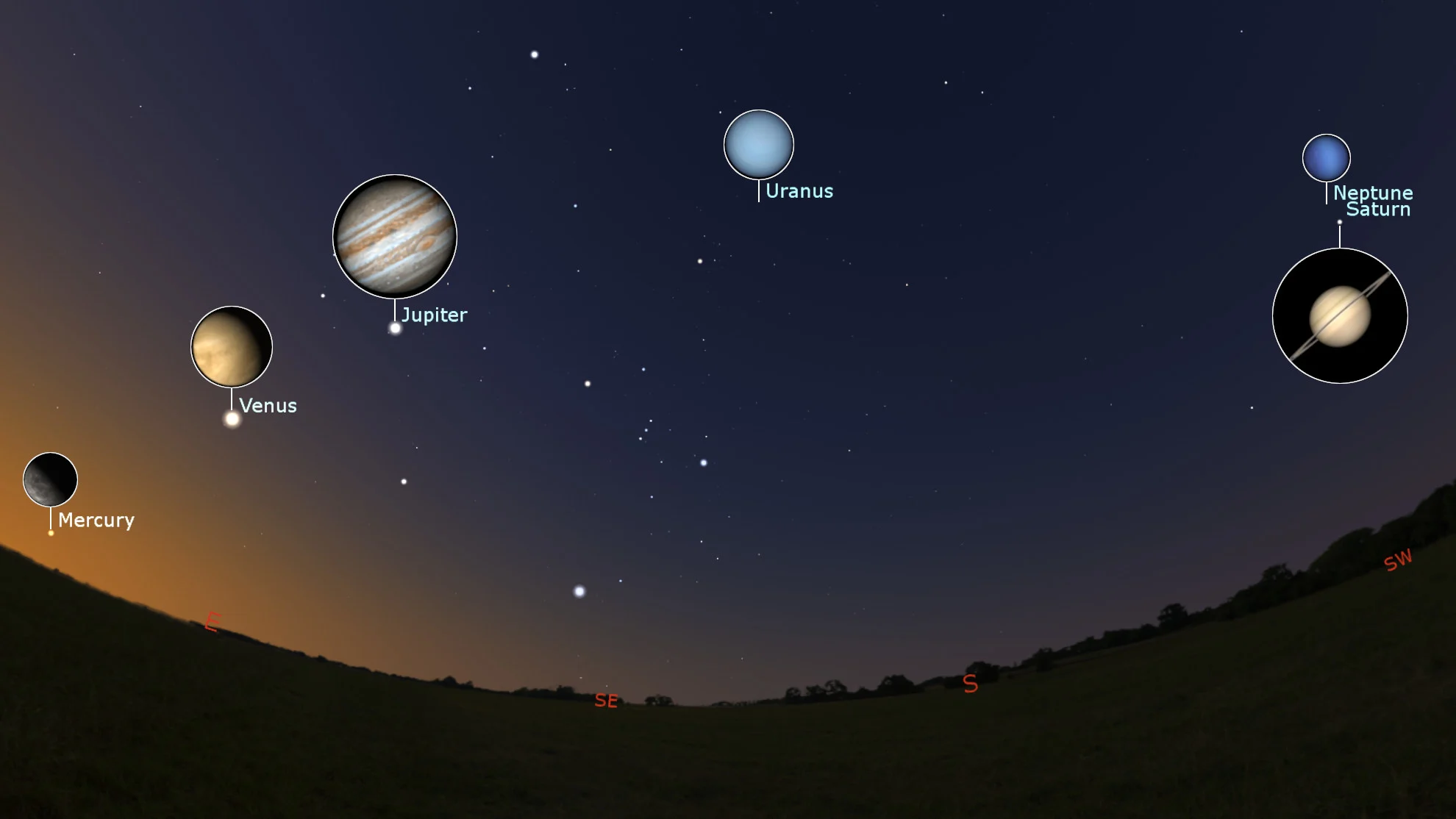For the rest of the parade, you will need to scan from the eastern horizon all the way across to the southwestern sky, to where Saturn will be visible to the unaided eye. For those who have a telescope, the planet Uranus can be found to the southeast, near the Pleiades, while Neptune will be just up and to the left of Saturn.

This simulation of the predawn sky for September 1, 2025, shows the planets Mercury, Venus, Jupiter, Uranus, Neptune, and Saturn, strung across sky, to form a ‘six planet parade’. Each planet is accompanied by an inset image showing a larger view of what it would look like through a telescope. (Stellarium/Scott Sutherland)
The parade loses a member fairly quickly as the month progresses.
From the 1st through to the 4th or 5th, Mercury should still be visible in the east. Exactly when we lose sight of it in morning twilight depends on the observer’s location, when the Sun rises for them, and their elevation above sea level. By the end of the week, though, we will be left with only five members of the ‘parade’ in the sky.

The predawn planet parade on September 1 and 6, showing the changes in the parade’s lineup. (Stellarium/Scott Sutherland)
Keep an eye on Saturn through the first three weeks of the month, as the planet grows brighter, night by night.
Saturn at its brightest
On the night of September 20, just before the summer season ends, the planet Saturn will reach its brightest in our night sky.
This point, known as ‘opposition’, is when Saturn lines up on the exact opposite side of Earth from the Sun.

